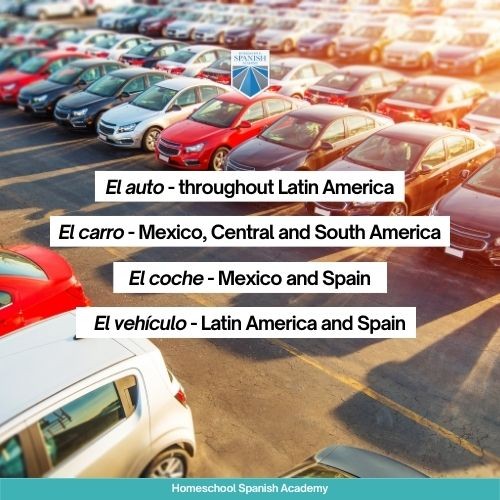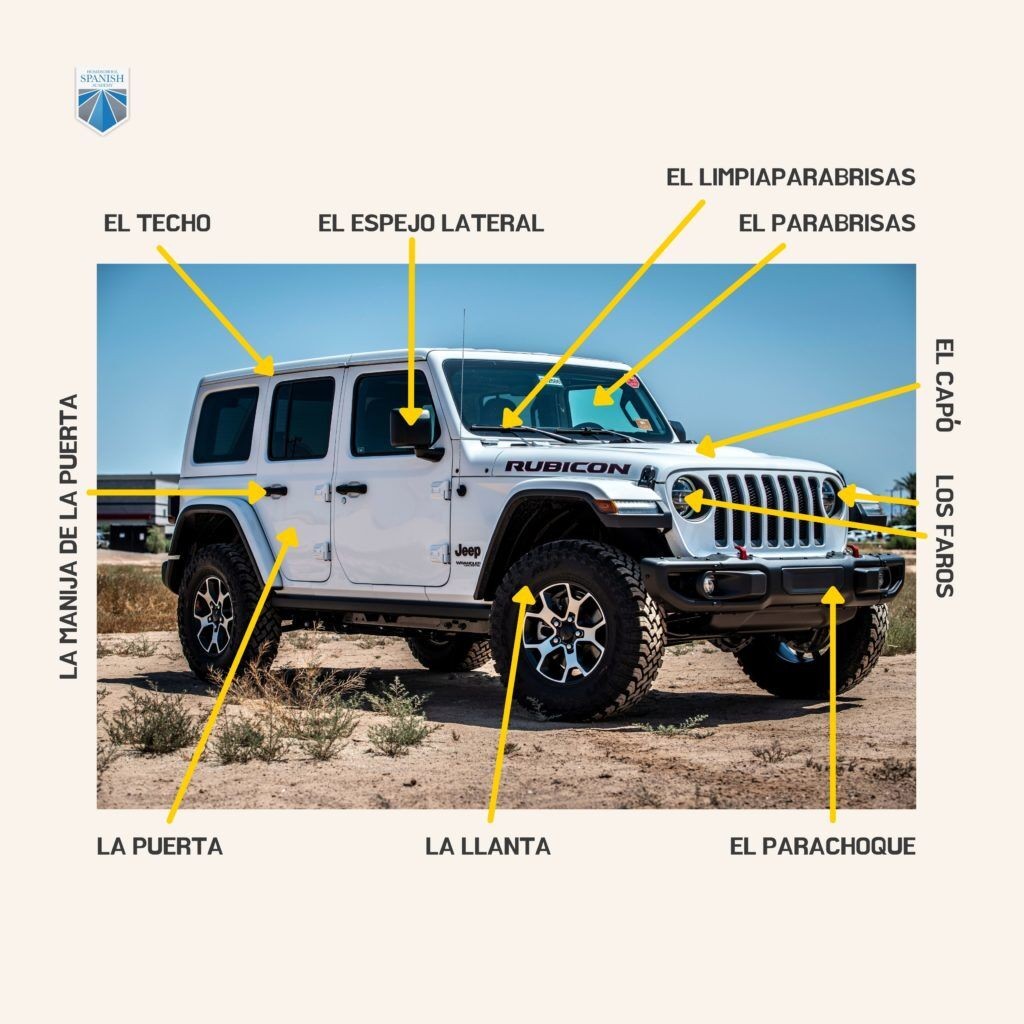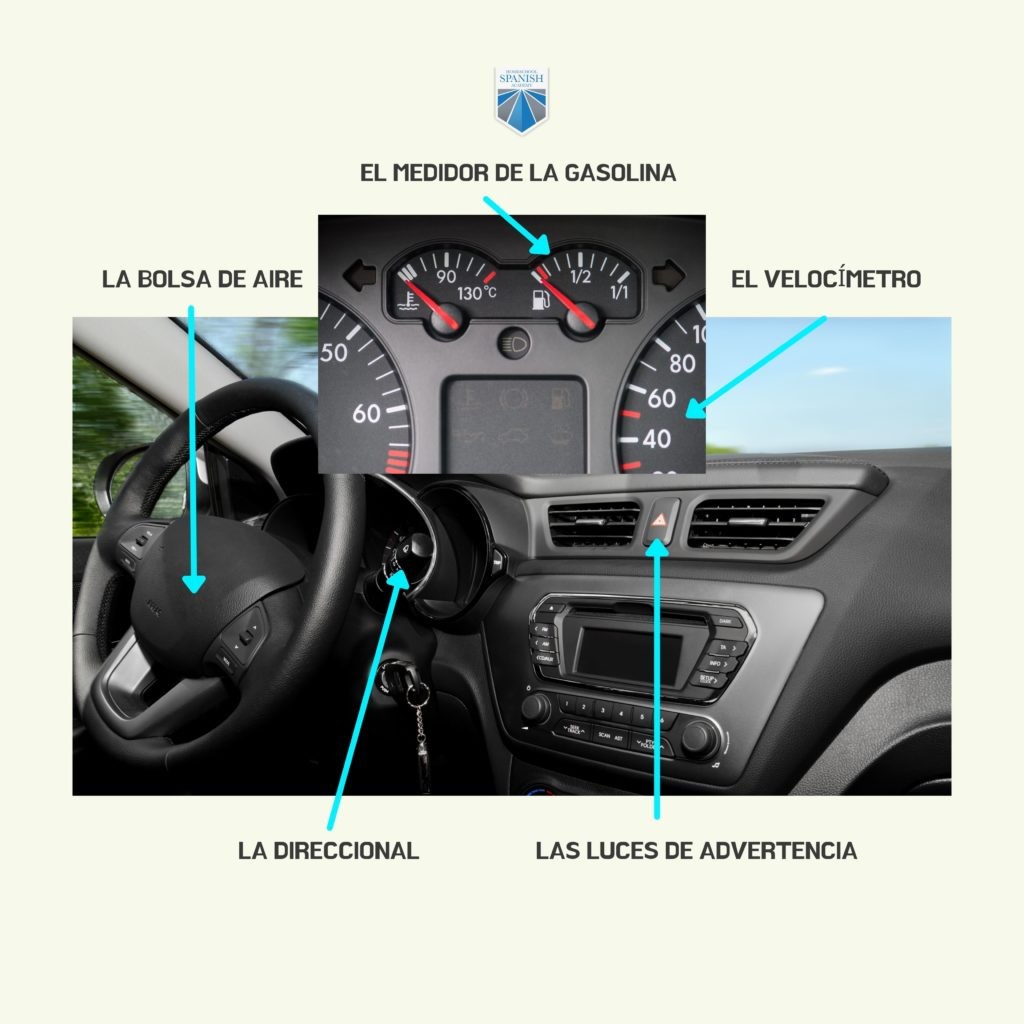Understanding the different parts of a car is essential knowledge for any vehicle owner. Whether you’re a seasoned car enthusiast or a new driver, knowing the names of interior car components can be incredibly useful. This knowledge empowers you to communicate effectively with mechanics, understand repair guides, and even appreciate the engineering marvel that is your automobile.
This guide provides a detailed breakdown of interior car parts vocabulary, along with essential terms for exterior, under-the-hood, and instrument panel components to give you a complete overview.
Essential Interior Car Parts Vocabulary
Let’s begin our exploration with the car’s interior. These are the parts you interact with most frequently as a driver or passenger. Familiarizing yourself with these terms is the first step to building your automotive vocabulary.
| English | Description |
|---|---|
| Accelerator Pedal | The pedal used to increase the car’s speed. |
| Brake Pedal | The pedal used to slow down or stop the car. |
| Clutch Pedal | (In manual transmission cars) The pedal used to disengage the engine from the transmission when changing gears. |
| Gear Stick/Shifter | The lever used to change gears in a manual or automatic transmission vehicle. |
| Glove Compartment | A storage compartment built into the dashboard, often used for documents and small items. |
| Handbrake/Parking Brake | A lever or pedal used to engage the parking brake, preventing the car from rolling when parked. |
| Horn | A device used to make a loud sound as a warning signal. |
| Floor Mats | Removable coverings placed on the car floor to protect the carpet. |
| Rearview Mirror | A mirror positioned inside the car to allow the driver to see what’s behind the vehicle. |
| Seatbelt | A safety harness designed to secure the occupant of a vehicle against harmful movement during a collision or sudden stop. |
| Seats | The places where the driver and passengers sit in the vehicle. |
| Steering Wheel | The wheel used by the driver to control the direction of the vehicle. |
| Power Steering | A system that assists the driver in steering by reducing the effort needed to turn the steering wheel. |



Key Exterior Car Parts Vocabulary
Moving to the outside of the car, let’s learn the names of the exterior components. Knowing these terms is helpful for describing your car’s appearance or discussing any external damage.
| English | Description |
|---|---|
| Bumper | A horizontal bar fixed across the front and rear of a motor vehicle to reduce damage in a collision. |
| Door Handles | The handles used to open and close the car doors. |
| Doors | Hinged panels that allow entry and exit from the vehicle. |
| Fenders (Front and Rear) | The parts of the car body that surround the wheel wells. |
| Grill | A decorative and protective panel at the front of the car, often allowing air to flow to the radiator. |
| Headlights | Powerful lights at the front of the car that illuminate the road ahead. |
| Hood/Bonnet | The hinged cover over the engine compartment at the front of the car. |
| Hubcaps/Wheel Covers | Decorative disks that cover the center of the car’s wheels. |
| Indicator Lights/Turn Signals | Flashing lights that signal the intention to turn left or right. |
| License Plate/Number Plate | A plate displaying the registration number of the vehicle, legally required for identification. |
| Side Mirrors/Outside Mirrors | Mirrors located on the exterior doors to provide the driver with a view of the sides and rear of the vehicle. |
| Roof | The top covering of the car. |
| Sunroof/Moonroof | A panel in the roof of a car that can be opened to admit light or air. |
| Tail Light | Red lights at the rear of the car that indicate its presence and are illuminated when braking. |
| Trunk/Boot | The compartment at the rear of the car for carrying luggage and other items. |
| Wheels | Circular components that rotate to allow the car to move, typically fitted with tires. |
| Windows | Transparent panels in the car doors and body that allow visibility and light entry. |
| Windshield/Windscreen | The large front window of a car, designed to provide a clear view of the road ahead. |
| Windshield Wipers/Windscreen Wipers | Mechanical arms with rubber blades that sweep across the windshield to remove rain, snow, or debris. |
Under the Hood Car Parts Vocabulary
For those interested in the mechanics of a car, understanding the vocabulary for parts under the hood is crucial. These are the components that make the car run.
| English | Description |
|---|---|
| Air Filter | A filter that cleans the air entering the engine. |
| Alternator | A generator that produces electrical power to charge the battery and power the car’s electrical systems while the engine is running. |
| Battery | A device that stores electrical energy and provides power to start the engine and operate electrical accessories when the engine is off. |
| Belt (Drive Belt/Serpentine Belt) | A belt that transmits power from the engine’s crankshaft to various components like the alternator, power steering pump, and air conditioning compressor. |
| Camshaft | A rotating shaft within the engine that operates the intake and exhaust valves. |
| Carburetor | (In older cars) A device that mixes air and fuel for combustion in the engine. |
| Catalytic Converter | A device in the exhaust system that reduces harmful emissions. |
| Coil (Ignition Coil) | An induction coil in the ignition system that increases the battery’s voltage to thousands of volts to create a spark in the spark plugs. |
| Combustion Chamber | The space in the engine cylinder where fuel and air are burned. |
| Crankshaft | A rotating shaft within the engine that converts the linear motion of the pistons into rotary motion. |
| Fuel Pump/Gas Pump | A pump that transfers fuel from the fuel tank to the engine. |
| Ignition System | The system responsible for starting the combustion process in the engine. |
| Piston Rod/Connecting Rod | The rod that connects the piston to the crankshaft, transmitting force and motion. |
| Pulley | A grooved wheel that helps to transmit power via belts. |
| Radiator | A cooling device that removes heat from the engine coolant to prevent overheating. |
| Exhaust Valve | A valve that controls the release of exhaust gases from the combustion chamber. |
| Thermostat | A device that regulates the temperature of the engine coolant. |
| Vacuum Diaphragm | A flexible membrane used in various automotive systems, often for controlling vacuum pressure. |
| Valve (Engine Valve) | A device that controls the flow of gases or liquids, specifically intake and exhaust in an engine. |
| Voltage Regulator | A device that maintains a constant voltage level in an electrical system. |
Instrument Panel Car Parts Vocabulary
The instrument panel, or dashboard, contains crucial gauges and indicators that provide information about the car’s operation.
| English | Description |
|---|---|
| Airbag | A safety restraint device designed to inflate rapidly during a collision to protect occupants. |
| Fuel Gauge/Gas Gauge | An instrument that indicates the amount of fuel in the fuel tank. |
| Speedometer | An instrument that indicates the speed of the vehicle. |
| Turn Signal Indicator | Lights on the instrument panel that flash to indicate the activation of turn signals. |
| Warning Lights/Indicator Lights | Lights on the instrument panel that illuminate to warn the driver of potential problems or system malfunctions. |
Conclusion
Building your vocabulary of car parts, especially interior components, is a valuable step towards becoming a more informed and confident car owner. Whether you are discussing maintenance with a mechanic, reading car reviews, or simply expanding your general knowledge, understanding these terms will prove to be incredibly useful. Continue to explore and learn about the fascinating world of automobiles!